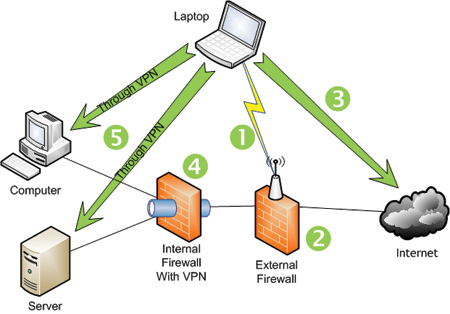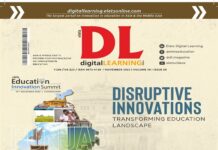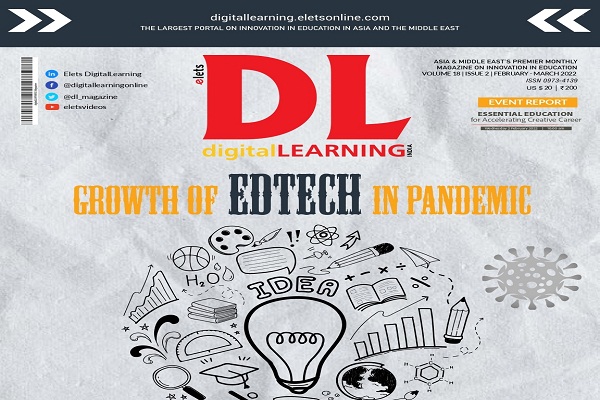Dr. S. Arulchelvan (Assistant Professor,
Department of Media Sciences), Anna University Chenna
 Anna University Chennai is one of the top most technical institutes in India and has taken several initiatives to enhance teaching learning process; most prominent being the recently introduced Wi-Fi services within the campus
Anna University Chennai is one of the top most technical institutes in India and has taken several initiatives to enhance teaching learning process; most prominent being the recently introduced Wi-Fi services within the campus
Wi-Fi (Wireless Fidelity) access technologies offer an interesting insight into the changing way in which the Internet is used and impacts our everyday life. With the increase in technology use by students, higher education institutions are investing money into new technologies for college students in order to meet the needs and expectations of this technology oriented generation. Growing popularity of social networking, video sharing, and music streaming, true broadband Wi-Fi access is becoming a necessity to support the new generation of Wi-Fi enabled devices and applications.
Wi-Fi, a play on the older term Hi-Fi, is a wireless networking technology used across the globe. Colleges and universities have been perhaps the earliest and most aggressive adopters of Wi-Fi technology over the past five years. Wi-Fi offers a simple way to provide network connections in hundreds of campus locations that could not be reached cost-effectively with wired Ethernet: classrooms, libraries, administrative offices, and even outdoor areas and athletic facilities.
Anna University, Chennai is one of the top most technical institutes in India and has taken several initiatives to enhance teaching learning process; most prominent being the recently introduced Wi-Fi services within the campus and students from Anna University now will be able to access wireless broadband Internet within the campus. Under this project, the University has invested a huge amount in providing Wi-Fi services to classrooms, hostels and four campus of Anna University namely, College of Engineering, Guindy, Alagappa College of Technology, Madras Institute of Technology and School of Architecture and Planning.
To avail the benefits of Wi-Fi services, the students just need to register their laptops with the Centre before they can access the network freely. With a 26 Mbps capacity, the university network is geared to handle unlimited usage by the students.
Literature Review
It is believed that technologies that facilitate resources can be used effectively to promote lifelong learning, and support learner-centred approaches by being vastly available. However, in spite of its remarkable contribution to humanities as a whole, specifically to developing countries, technology is also creating new gaps within societies as well as between developed and developing countries, particularly through the so-called “digital divide”. Universities have a considerable role to play in bridging these gaps but they must do so within a context that is shifting as we speak (UNESCO, 2001). So, the institutions have to be committed to ensure that technology is used effectively to enhance learning/ teaching processes.
Methodology
The University has introduced a new wireless technology to improve student's life with almost 70% of the campus being now connected to Wi-Fi. In order to find out the usage and impact of the Wi-Fi connectivity, a study was conducted between March and April 2010 covering about 200 students and twenty teachers from various strata of different disciplines of engineering using a self-administered questionnaire and in-depth interview to gather data. The study aimed at giving a deep insight about the impact new technology.
Results
- Positive impact of Wi-Fi usage on students learning
- Increase in usage of technology, as 40% students have already bought their laptops and 60% planning to buy one
- Purpose of usage is primarily for email and reference for the course work
- Time spent online has now increased to 12-15 hours per week
- Increased interactions among students and faculty, especially for circulating large texts

Wi-Fi offers a simple way to provide network connections in hundreds of campus locations that could not be reached cost-effectively with wired Ethernet: classrooms, libraries, administrative offices, and even outdoor areas and athletic facilities.
The study, though, had a positive impact on students, it also revealed conflicting results where many students spent long hours sending instant messages and on facebook.
However, the in-depth interview with faculty members revealed that they were quite content with the Wi-Fi technology that keep the students in par with the technological advancements happening all round the world and Internet is one medium which has bridged the gap. This service has enabled teachers to upload their lectures and take online classes and the faculty is also accepting online submission of the assignments and are sending notes online to their students.
The findings of the study affirm that Wi-Fi has encouraged students to invest in technology and has enabled them to transfer large quantity of data with the availability of high speed connections.The results of the study support empirically what many professionals have observed to be true: “there is a connection between the extent and ways in which students use technology and their level of development”.






















